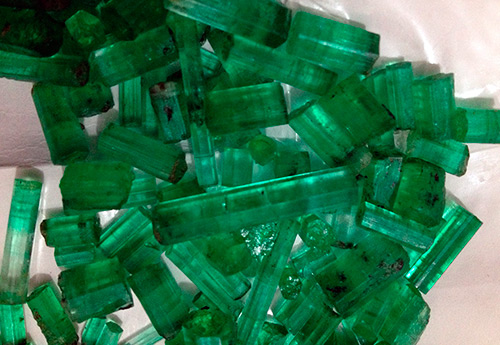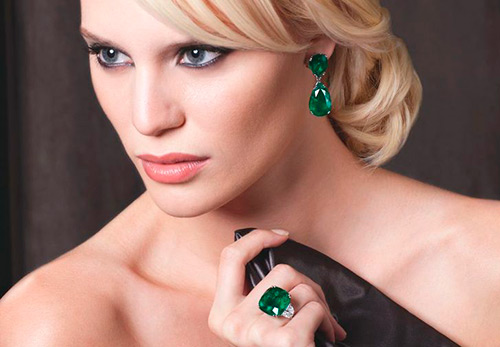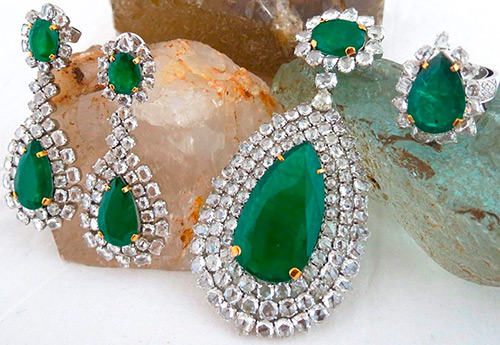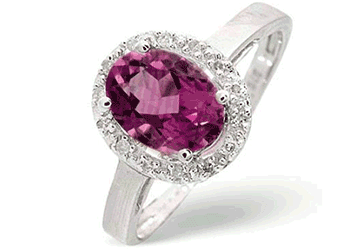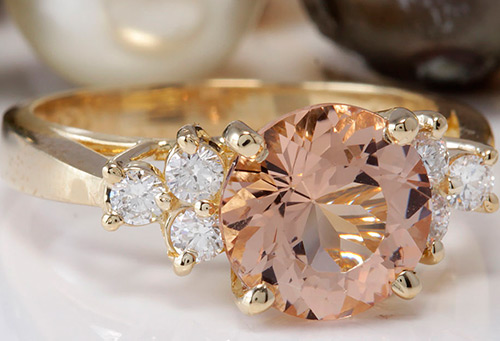Art
The gemstone emerald in history
Emeralds, beautiful and expensive stones, they fascinate everyone with their deep color of life and harmony. They were worshiped by Egyptian pharaohs, Indian maharajas, European rulers bowed to them.
Emeralds were already well known in Old Testament times. Emerald is one of the twelve stones that adorned the confidant of the high priest Aaron. Each of the stones bore the names of the twelve tribes of Israel. The emerald symbolized the tribe of the Levites - the descendants of Levi.
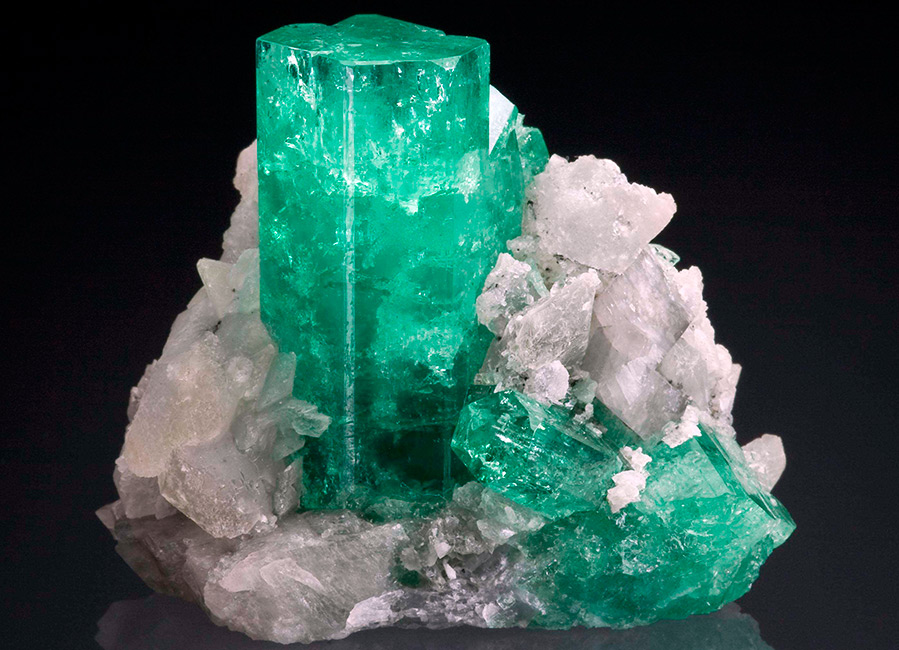
Emerald is one of those gemstones whose reputation and symbolism have changed over the centuries. Either he was reputed to be a witch's stone, then he symbolized cosmic energy and inner strength, or personified the spring renewal of nature, or even attributed a bad reputation to him - they considered him an attribute of the most terrible forces.
For alchemists, the emerald was a philosopher's stone, capable of breathing life into everything that exists. Be that as it may, the emerald among all peoples and all times aroused admiration, all those in power sought to possess it.
Most of the emeralds have been mined since the 1st millennium BC. in the mines of the Egyptian pharaohs. Evidence of this is rare. The first large deposits, between the Red Sea and the Nile during the time of the pharaohs, were the so-called Emerald Mountains. In modern history, they are referred to as mines Queen Cleopatra.
The queen herself was very fond of these gems, and the opportunity to receive from her hands an emerald decorated with the profile of Cleopatra was regarded as a sign of the highest mercy. These deposits were developed until the Middle Ages. Emeralds from here went all over the world.
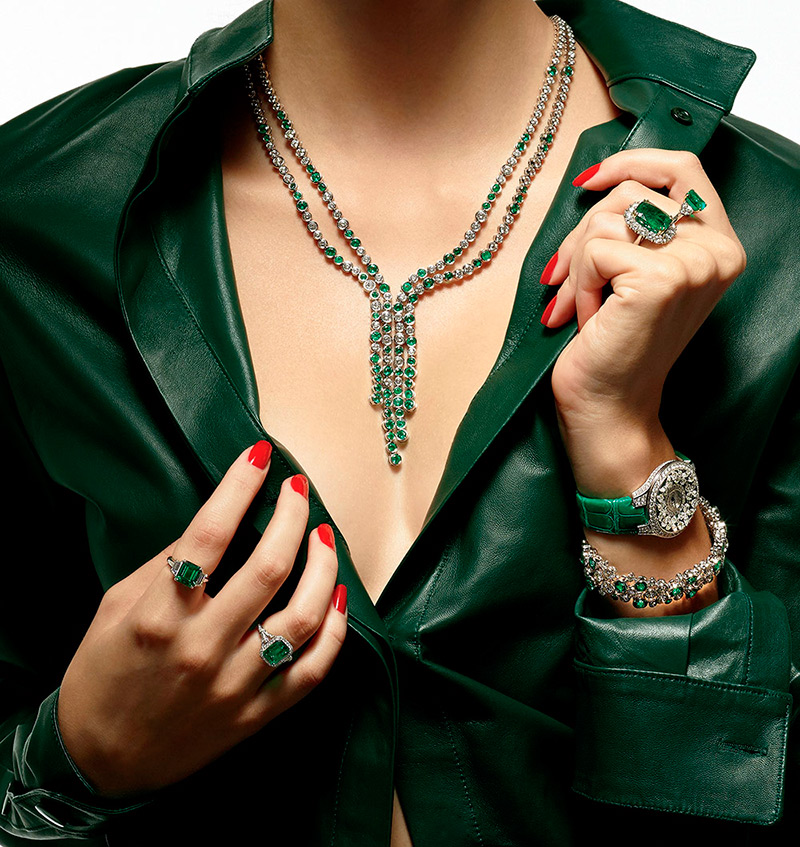
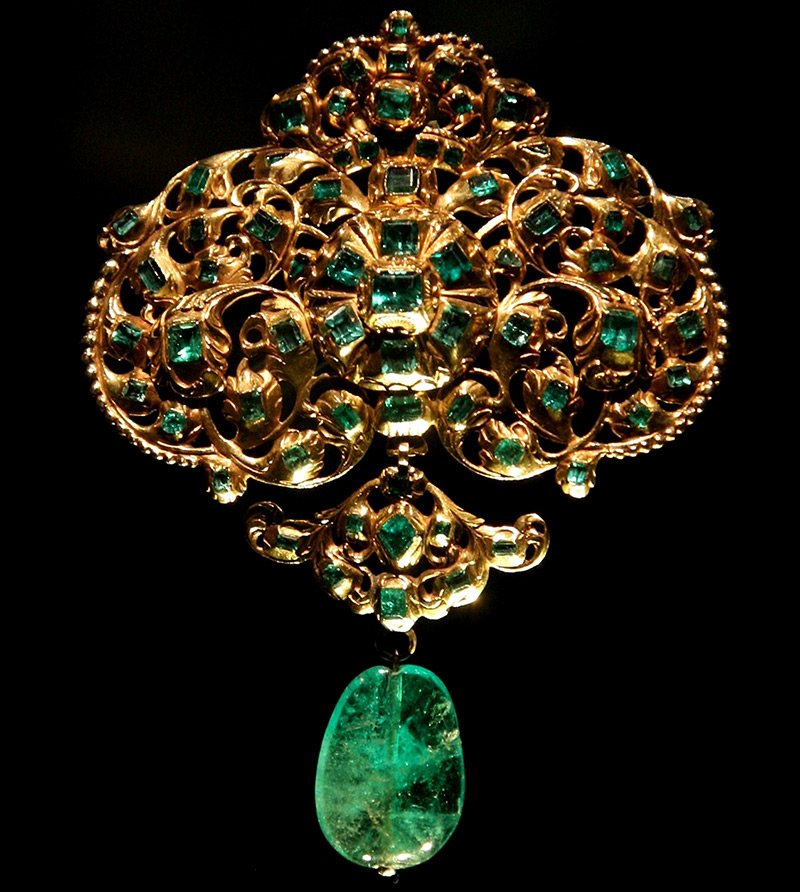
In 1830, French researchers discovered here a system of underground galleries, carved at a depth of 25 meters, and tools dating back to 1333 BC were also found there. Egyptian emeralds were very highly valued, although they were not of high quality, since were covered with many cracks.
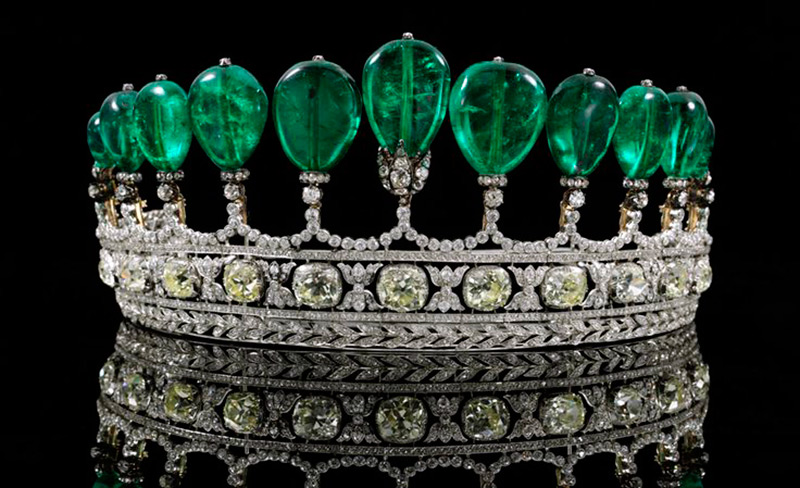
Most modern emeralds are mined in Colombia. Jewelers meticulously choose precious stones, and only 1/3 of all mined in Colombia are used for cutting. There are numerous deposits in Brazil, emeralds here differ from Colombian ones not only in color (they are usually lighter), but also in many inclusions that do not always allow using the stone for cutting.
There are deposits in Zimbabwe. Here not often, but there are emeralds that are not inferior in beauty to the Colombian ones, and sometimes even surpass them. Very similar to Colombian crystals are found in Afghanistan.
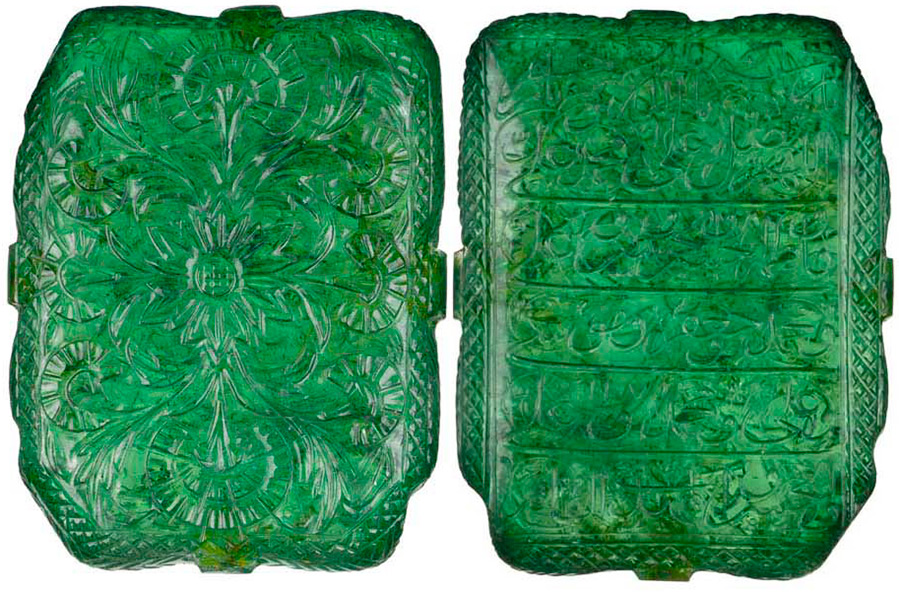
Great Mogul
Many emeralds belonged, as always, to the greats of this world. For example, one of the largest stones has a personal name - "Great Mogul"... It is named after the Indian rulers who ruled India in the 16th - 17th centuries. It is believed that the stone was brought from Colombia and sold at the end of the 17th century to the last of the Mughal dynasty - Aurangzebu.
Several lines of a Muslim prayer were engraved on one side of the gem, and on the other, a magnificent oriental ornament in the form of a flower. A turban could have been decorated with it, or perhaps Aurangzeb's clothes. The stone weighed 217.8 carats. In 2001, this emerald was sold at Christie's for $ 2.2 million.
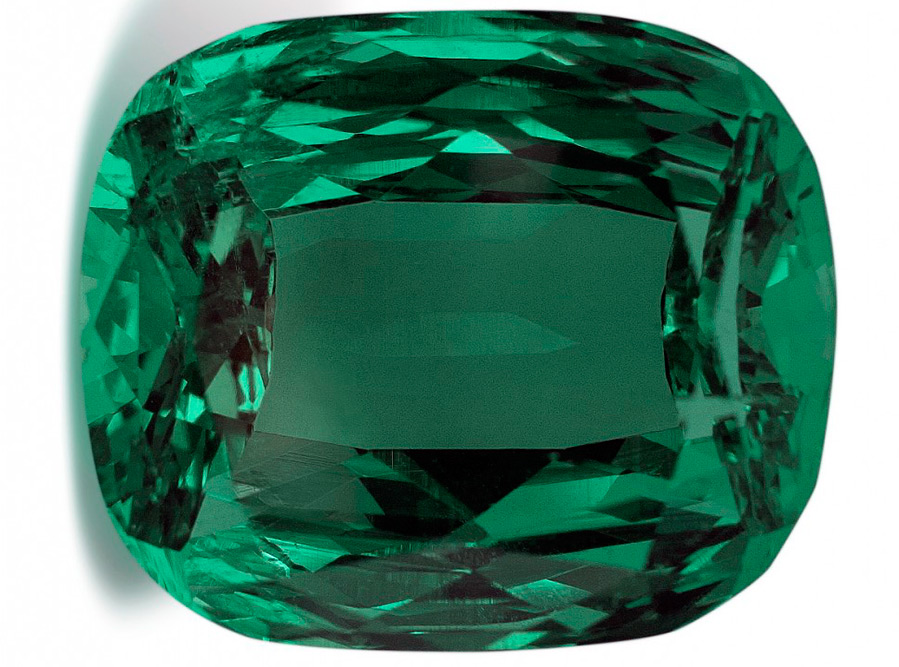
The sea routes are dotted with numerous shipwrecks. The emeralds plundered by the conquistadors were sent to the Spanish court. Most of these stones were captured in Inca temples as well as in Colombia. Thousands of beautiful emeralds were removed. Emerald throughout South America was considered a sacred stone. And among the Europeans, it was valued above gold.
The ransom paid by the Inca Indians for the release of their leader is still considered one of the largest war booty in history. In 1532, the Inca leader Atahualpu was captured by the conquistadors. About 6 tons of gold items, decorated with emeralds and other precious stones, were paid for it.
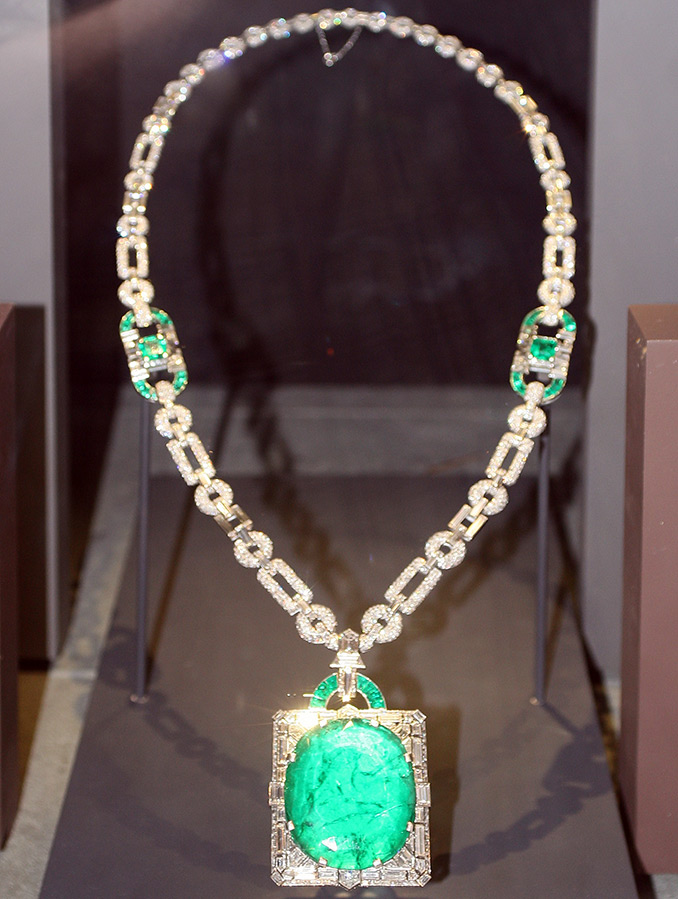
In 1555, Europeans began mining an emerald deposit in Colombia. Since that time, under the supervision of the Spaniards, Indian slaves worked in the Colombian mines. The deeper the mines got, the less people survived. Emerald mining has reached unprecedented proportions.
Until now, emeralds mined in Ecuador and Colombia are called "Inca". Many stories and legends are associated with a wonderful gem.
Russian naturalist V.M. Severgin, in his notes on mineralogy, says that the Peruvians had a huge emerald, the size of an ostrich egg, which they revered and called their Emerald Goddess. The Spaniards did not get this goddess. When the Indians saw that the robbers-conquistadors would soon overtake them, they broke the magnificent crystal. This is the story of the legend.
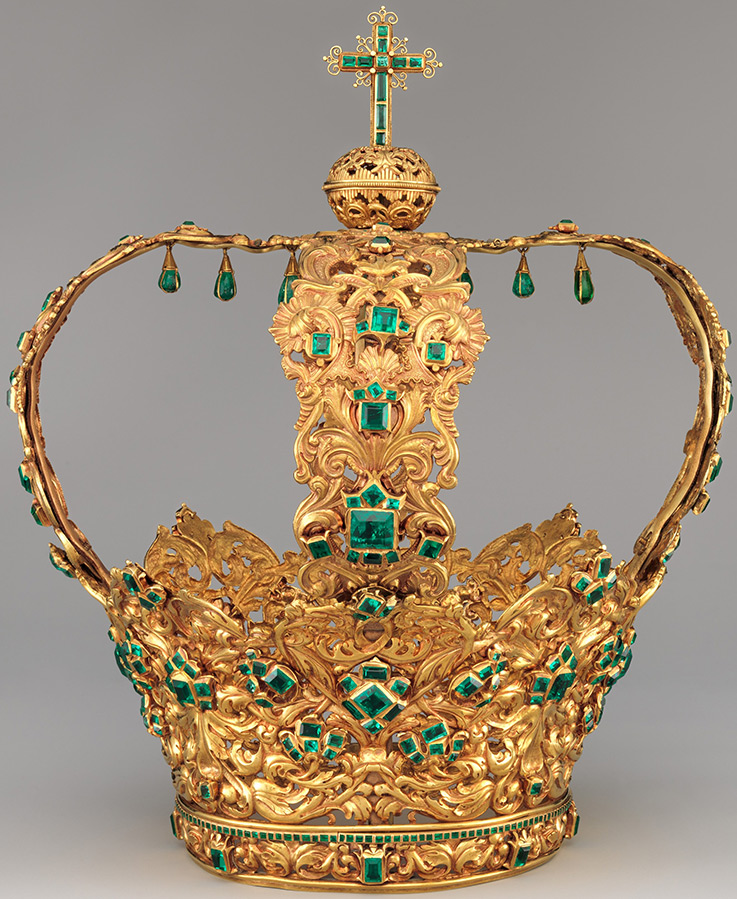
More than 450 emeralds adorn "Crown of the Andes", it contains a part of those stones that were in ransom for the ruler of the Incas Atahualpa. She was for a long time in the Cathedral of Our Lady in the Colombian city of Popayan, occasionally she was kidnapped, but she returned again until in the 20th century she was acquired by a consortium of American businessmen.
In the 19th century, emerald deposits were also found in the Urals. Unique emeralds in 672 g and 1200 g are kept in the Diamond Fund of Russia.
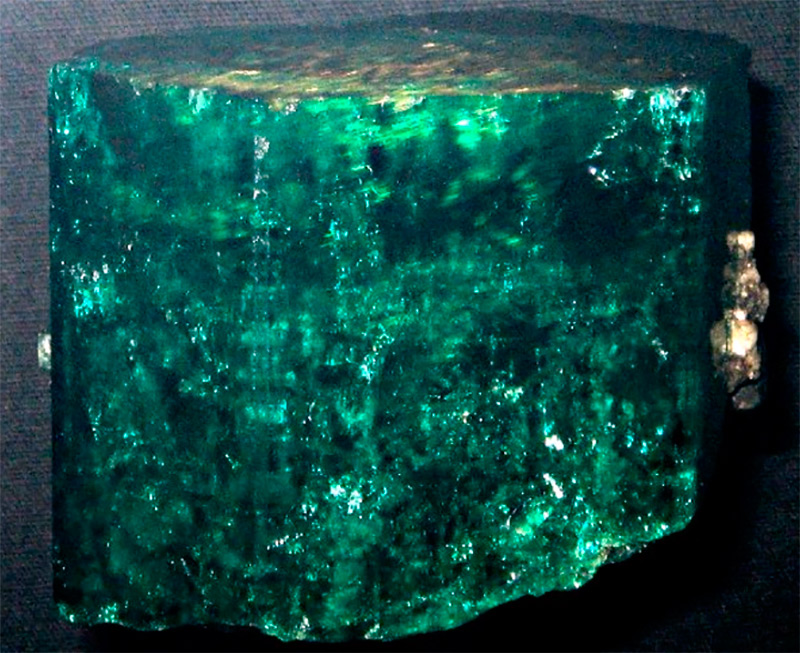
One of the world's largest emeralds - Devonshire emerald, who received the name of the sixth Duke of Devonshire - William Cavendish. It was found in the famous Colombian mines and was given as a gift to the duke by the first emperor of Brazil and King of Portugal Pedro I, although according to another version, the duke bought this crystal from him.
"Emerald Buddha" - a stone weighing 3600 carats was found in 1994. A statuette of Buddha was carved from it and named after the temple of the same name in Thailand - "Emerald Buddha".
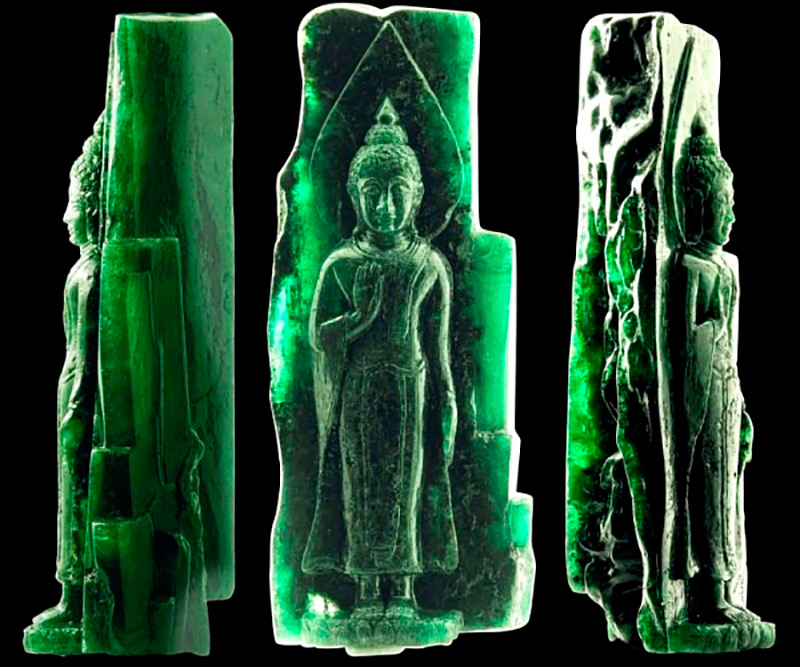
Emerald "Queen Isabella" - The Colombian emerald of 964 carats was named after Queen Isabella, wife of King Charles V of Spain. At the beginning of the 16th century, the head of the Spanish army, Hernan Cortez, became the owner of this amazing emerald, which, among all other treasures, was presented to him as a gift by Montezuma, the Emperor of the Aztecs.
Cortez named the emerald after the queen, whom he, in turn, also wanted to present as a gift. But this was not destined to happen, expeditions and military operations in the New World were suspended due to lack of funds. The emerald remained with Cortez. Cortez presented the gem and many other treasures to his wife Juana De Zuniga on their wedding day.
For a long time, the emerald remained in the family of Juana's descendants, almost 200 years. Then the Spanish king Ferdinand VI, already in 1757, nevertheless demanded the return of the promised gem. In the same year, a ship loaded with emeralds, gold and other treasures of the Aztecs sailed to the shores of Spain, and with them the "Emerald of Isabella".
In the area of the Bermuda Triangle, the ship was wrecked. More than 200 years later, in 1992, sunken treasures were recovered from the ocean floor. Among all the treasures was an oblong emerald of rare beauty that did not fit in the palm of your hand. As a result of all the research, scientists recognized him as the "Emerald of Isabella".
Professional divers have made the most unique discovery of the late 20th century. In the treasures found on the sunken ship were found faceted emeralds weighing 25,000 carats, gold jewelry from the pre-Columbian era, an emerald druse weighing more than 24,000 carats and hundreds of unique and priceless Aztec and Mayan jewelry.
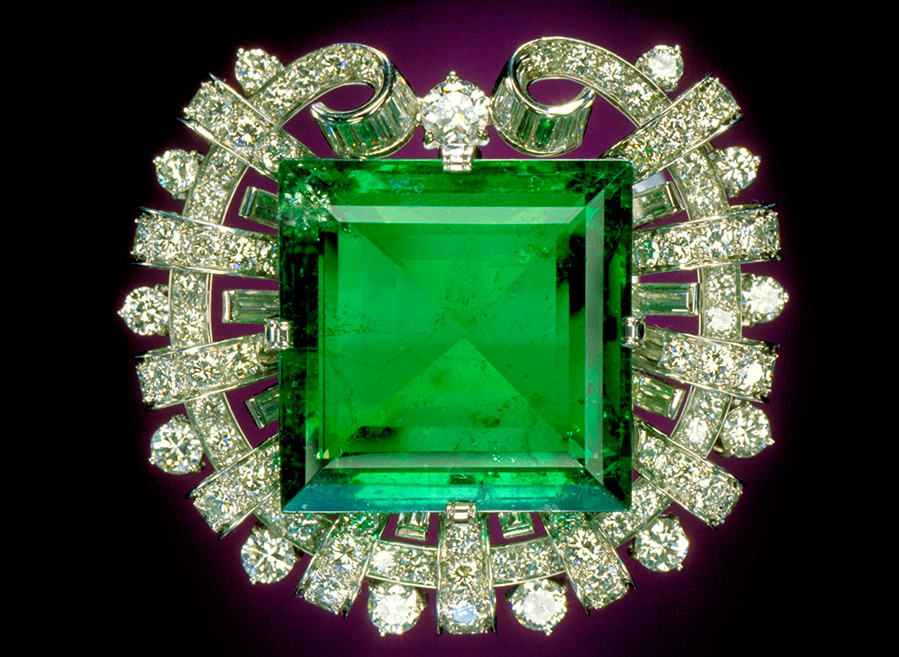
Emerald Hooker
The National Museum of Natural History in Washington DC houses the famous platinum brooch "Hooker"... In the center of the brooch there is a large emerald weighing 75, 47 carats.The crystal is unique not only in size, but also in that it contains no inclusions, which is a great rarity for emeralds.
This emerald also has its own history. The stone was found in Colombian mines in the 16th - 17th centuries, exported to Europe by the Spanish conquistadors, then cut and sold to the rulers of the Ottoman Empire. The ruler of the empire wore this gem in the buckle of his ceremonial robe.
In 1908, the Sultan was in exile, many of the jewels were taken to Europe and sold. The unique emerald was purchased by the Tiffany Jewelry Company, where it was taken care of, surrounded by diamonds. So he ended up in the brooch that Janet Annenberg Hooker bought.
After some time, she donated a precious brooch to the Museum of Natural History, and some time later, Hooker transferred $ 5 million to the same museum. With this money, a gallery of precious stones was created.
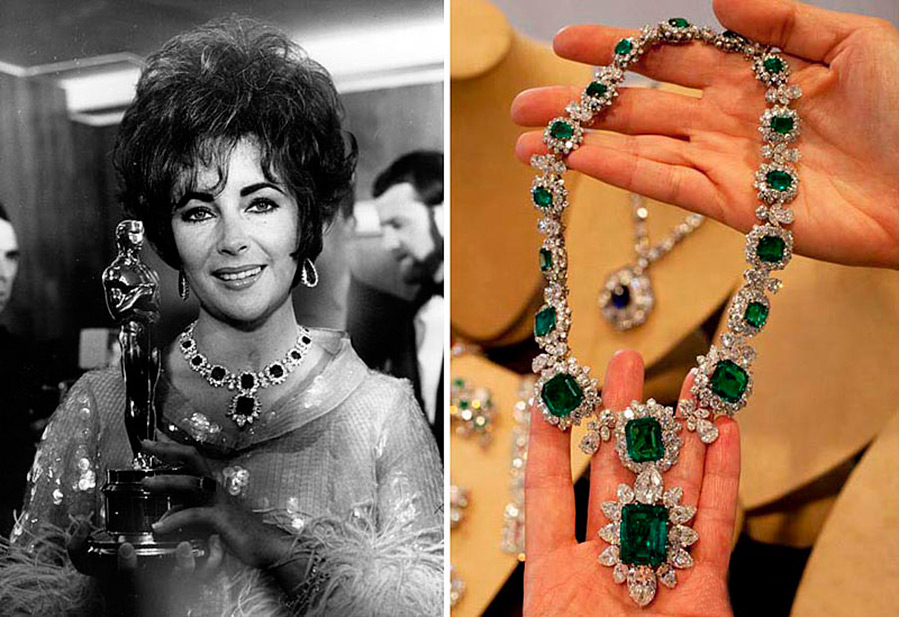
In the collection of jewels Elizabeth Taylor there is a unique necklace with emeralds framed by diamonds, a necklace in a headset with earrings made of emeralds, cut in the shape of a heart. The famous actress's jewelry is admirable.
Emeralds were and remain the most coveted jewels of nature, symbolizing success and happiness. Emerald stories continue ...
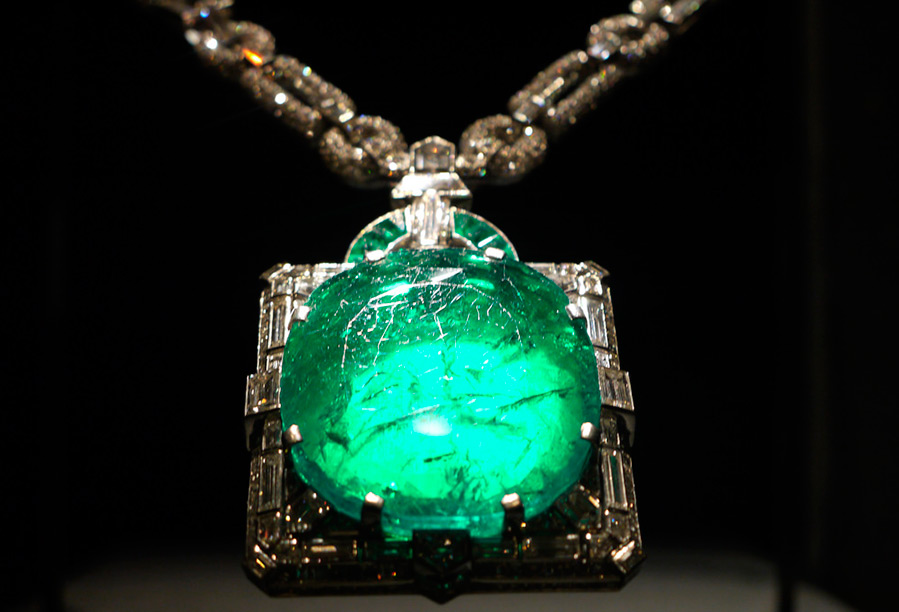
Comments and Reviews
Add a comment
Similar materials
Rating news
Shades of clothing that make women look younger
What shades of hair make women younger: rules and photos
Funny wedding dresses - photos and ideas
12 most expensive down jackets for the winter
How to look 25 at 40: tips from supermodels
Beautiful schoolgirls
Anti-aging haircuts and hairstyles for women
Fashionable skirts for autumn and winter
Fashionable women's trousers for the cold season
Fashionable and stylish sandals for summer 2024
Spring-summer 2024
 Fashionable dresses and tops with thin spaghetti straps
Fashionable dresses and tops with thin spaghetti straps
 Bandana tops: how to wear stylishly and beautifully
Bandana tops: how to wear stylishly and beautifully
 How to put together the perfect men's wardrobe for the summer
How to put together the perfect men's wardrobe for the summer
 Trendy shorts for spring-summer 2024
Trendy shorts for spring-summer 2024
 Fashionable skirts for spring-summer 2024: a guide to online shopping
Fashionable skirts for spring-summer 2024: a guide to online shopping
 The most fashionable dresses spring-summer 2024: styles and colors
The most fashionable dresses spring-summer 2024: styles and colors
 Fashionable total look 2024: image ideas and trends
Fashionable total look 2024: image ideas and trends
